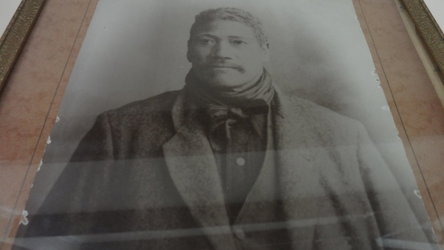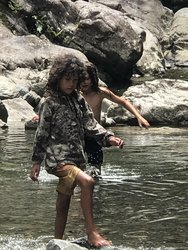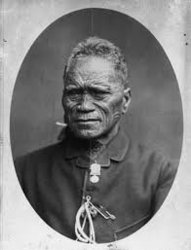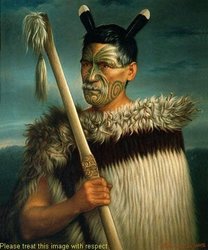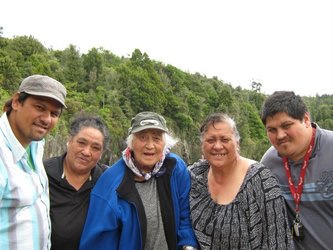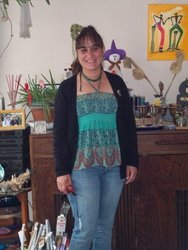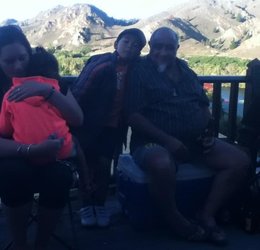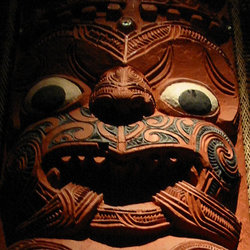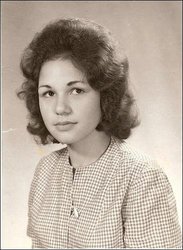| About Waitere-Tainui Whakapapa
Please sign in to see more. This Waitere Whakapapa website is a taonga or my treasured gift to all my whanau, but especially for my 11 children & 3 grandchildren....
Asherah Menorah Sheshat Rongoa Waitere
Ananda Ariki Tawhirimatea Huka Tokotoru Waitere
Joseph Hapipi Horomona Hakopa Waitere
Wiremu Ngatokowaru Raiona Hauāuru Hotunui Waitere,
Te Whareoteaoturoa Hoone Waitere,
Te Wehi Wakatoarangatira Kawharu Rūaumoko Waitere,
Ariana Eileen Iyah Moana Waitere,
Tane Mahuta Zion Ngatini Waitere,
Leroy Elijah Tafari Pitama Waitere-Bull,
Isaac Israel Judah Hone Waitere-Bull,
Kali Alana Amie Kiri Waitere-Bull & for her baby boy my 1st grandson Marccus Seddon Hone Waitere Nottenskinner.
Whakapapa is highly regarded as an integral part of maori life, and because, of all the Maori tradiations, it is the Land which Maori hold most precious.
The Land is Papatuanuku (the Earth Mother) and needs to be cared for if she is to provide life’s essentials, such as water, food and shelter.
Conservation and respect for the land was therefore an integral facet of Maori life and was practised on a daily basis.
Maori are Kaitiaki (guardians) of the land during their lifetime and were therefore responsible for ensuring that the land was handed on to the next generation in a better or same condition that they had received it.
https://www.youtube.com/watch?v=lgZT0_8Hpw0&t=303s>
"Taua" How a Great Chief is Chosen
https://www.youtube.com/watch?v=dGLoAKotGOU
Written Maori tradition has it that Kupe discovered Ao-tea-roa somewhere about 950 A.D., and that Toi settled at Whakatane some 200 years later, i.e., about 1150. At that time on the land there was a fairly large population of "Tangata whenua" who were of a peaceful and friendly disposition.
Again, later, about 1240, came the great Heke - the migration, in their great sea-going canoes, of our Maoris to Ao-tea-roa.
For various reasons, they left their home lands of Hawaiki (generally accepted as being the Pacific Islands of Tahiti, Raiatera Rarotonga, etc.), to seek a new home for their peoples in a new and peaceful country.
The skill and courage of these intrepid colonists has been handed down in song and story by successive generations, to give us a vibrating history of this proud and valiant people. Today, as a result of further research including radiocarbon dating, it is generally accepted that New Zealand was settled by people from East Polynesia, who set off in different canoes at different times, with the first canoes arriving some time in the 1200s.
One of the canoes in this Heke was the "Tainui" commanded by The chief Hoturoa and navigated by his tohunga Rakataura
Ours is a tale of romance and culture that built a spiritual and human environment against a background of war-like and valiant deeds.
Whakapapa is a very important part of our maori life, and a great deal of our peoples time was spent in the Whare Wananga (House of Learning) in memorising its many ramifications. Maori had no written language, so the whole of the tribal history, with legends and spiritual beliefs added, had to be memorised accurately by the young rangatira. It was the sacred duty of the tohunga to pass on all this knowledge and make sure that the lessons learned in the Whare wananga were not forgotten or distorted.
The tribal whakapapa thus became the ‘backbone’ on which all tribal history and traditions were attached. Maori never sought to improve a story by leaving out human frailties - rather he embellished his story with the dramatic. They were an elemental people, and elemental passions prevailed.
The Maori trace ancestry and descent through both males and females, a method which greatly increases the number of genealogical lines to be remembered. As the proverb has it 'he kawai hue, he kawai tangata' (human pedigrees are like the runners of a gourd plant). The complexity is simplified a little by the concept of tahuhu (ridgepoles) or aho ariki (chiefly lines) which consist ideally of first-born males. One's genealogical status is indicated, but not ecessarily determined by the number of generations one is away from the aho ariki.
This whakapapa mentions people, some of whom have left nothing but their names; others had distinguishing characters, some good, some bad, but mostly a mixture of both. Here then, next to some of our tupuna can be seen a little story about them & their time.
Waitere whanau & whanaunga are direct descendants of Hoturoa(TAINUI WAKA) & Turi(AOTEA WAKA), with ancestry lines also to KURAHAUPO WAKA, TE ARAWA WAKA, MATAATUA, TOKOMARU, TAKITIMU, MAATAA-HOURUA, KAHUITARA & HOROUTA WAKA'S.
------------------------------------ Ngāti TE WEHI ----------------------------------------
The Waitere whanau & whanaunga have a unbroken line of decent & occupancy through ancestor Te Wehi, to the Aotea & Kawhia Harbours right back to the Tainui waka arrival at about 1290 A.D, & the Aotea waka about 1240 A.D.
Note: These dates are based on my own research as I have come to agree with recent studies & radiocarbon dating.
Te Wehi is the founding ancestor of the Ngāti Te Wehi iwi. Achieving this by securing back a sacred dog skin war cloak or Kahu Kuri(dog-skin korowai were the most prestigious of Maori cloaks) also a war club or pounamu mere, items that no other local chief could obtain but by the mana(prestige) of his father Pakaue, who got killed for them anyway by the son of the local Kawhia Chief who was jealous as he was refused the High Chiefly and scared items.
Te Wehi or Te Wehi Te Kihi parents are father Pakaue & mother Koata of Ngāti Koata, Pakaue is of Ngāti Tū-irirangi/Ngāti Wairere. There are a few versions to the whakapapa of who were the parents of Pakaue according to Ngāti Te Wehi Kāumatua and Kūia during the Waitangi hearings held at Ngaruawahia in 1908-09 both Kauki Tauira of Ngaati Te Wehi and Te Kamanomano of Ngati Reko state the whakapapa of Pakaue and reference to Tuhorotini a son of Tuirirangi and Koura Tuwhea of Ngāti Wairere to be Pakaue's parents. Te Wehi's mum Koata according to Tainui is of the Ngāti Mahanga, Ngāti Mahuta & Ngāti Mango people.
According to research Te Wehi is said to have been a very swift runner and a fierce warrior, so too his older half brother Kawharu the Giant, both living prosperous but then separate lives after a small brotherly scuffle at Kawhia, in which Kawharu went to live with his father Ngaere and his people the Ngāti Tamainupo at Wai-keria.
Te Wehi Te Kihi was born in Kawhia at a pah site known as Karere-atua and spent his young adolescence in Kawhia, after their little scuffle older brother Kawharu left Kawhia but eventually came back after helping in battles against Te Arawa with Ngāti Raukawa chief Ngatokowaru.
Te Wehi moved to the Aotea Harbour after Pakaue his father was murdered for items only he could obtain, a very famous Dogskin Korowai cloak named Pīpītewai & equally famous sacred war club named Karioi-mutu was given to Pakaue by an inland chief named Te Rau who lived over the ranges in the Waipa Valley. Te Rau had completed this very beautiful kahu kuri (dogskin) cloak and was coveted by many local Chiefs. Pakaue's cousin Tūahu-māhina a son of Tū-irirangi & chief of that tribe, lived at Motu-ngaio pa not far from Karere-atua, His failed attempt to obtain these coveted items & remarks from the great Maniapoto chief Te Kanawa “O Tūahu-māhina, your prestige has been lowered by your younger relative Pakaue, because he has been able to obtain that which has been denied to you.” The thought of this made Tūahu-māhina very angry.
Te Kanawa went on to Kawhia to see Pakaue and his warrior sons and started an argument with Kawharu, which incensed Te Kanawa enough to complain to Tūahu-māhina who attacked with the Ngāti Ariari, Pakaue & his family escaping but Pakaue taking a different route was found by Tautini-moko son of Tuahu-māhina and killed elderly Pakaue for the cloak & sacred war patu. Toa-Rangatira(Ngāti Mango) is an uncle to Te Wehi as he married Pakaue's sister Mananaki. Half brother Kawharu married Toa-Rangatira's daughter Waikauri, the tupuna of Te Rauparaha.
Giant Kawharu not satisfied with his one revenge upon Tūahu-māhina's warriors, decided to enlist the help of his father-in-law Toarangatira, who's fist joint battle with Kawharu beat Te Kanawa after he attacked them, but ToaRangatira let Te Kanawa go, to spread their fame as great warriors, the pair with their tribes then won a battle against Tūahu-māhina at Te Maika, the latter running to the safety of his Motu-ngaio Pa but then surrounded was ambushed & killed by ToaRangatira as he then tried to escaped Motu-ngaio, the names of the battles fought have been handed down to us. They were Te Moana-waipu, Pohoetangehe, and Te Keukeukeua.
After these battles about 1675, Kawharu & Toarangatira from Marokopa had Kawhia district in their undisputed possession. Older brother Kawharu now satisfied with the revenge he had obtained, desired to make peace with the survivors. Te Wehi would not agree, & Kawharu, not wishing to be further involved, collected his people & moved to the shores of Aotea harbour & occupied Raorao- kauere & Manuaiti Pa. Ngāti Toarangatira retained Motu Ngaio Pa till 1820's before migrating south with Te Rauparaha & Ngāti Koata.
News of the death of Tūahu-māhina spread & reached the ears of Tautini-moko, who had fled to Whanganui, and hearing that peace had been made, he returned with the sacred Patu & dogskin Korowai cloak & occupied the pa Te Rau-o-te-huia, not far distant from Raorao-kauere.
When Tautini-moko returned, Te Wehi was living at Te Maari Aotea Harbour, & when the news reached him that his father's slayer was across the harbour, he decided to kill him. When he announced his intentions however, he received no support, it being contended that peace had been made; but Te Wehi was not to be cheated of his revenge, & set out to Waikato to obtain assistant from that tribe.
According to ancestor's, Ngāti Te Wehi became an iwi after he had regained his father's Mana and made connections to his granduncles Wharetiipeti and Tapaue of Ngaati Mahuta. Mahuta begat Uerata who married Puakirangi, Koata's Auntie. Uerata & Puakirangi had Rangihoto, Wharetiipeti, Hourua & Tapaue.
After the support from Wharetiipeti & Tapaue to attack Te Rau-o-te-huia pa, Te Wehi, a very fast runner, chased down his father's assailant off the Aotea harbour peninsula killing him and sercuring Karioi Mutu & Pīpī Te Wai. Te Wehi gave the Scared Patu & Korowai to the Ngāti Mahuta Chiefs as they had their hand out for them, he also gave his daughter Reko to marry Tapaue's son Tahau. The then named Tokoreko & her husband Tahau became the Great Grand Parents of Whakaawi, mother of King Tawhiao.
Decades later the korowai cloak & Mere were sercured in a round-a-bout way by the rightful owners and placed in Ruakuri, one of three famous caves at Waitomo, but when this cave became known to Europeans they were both removed by Te Moerua Natanahira and placed in a vault at Te Kotahitanga, Otorohanga.
Te Wehi has been known to have had 3 wives, but his principle wife was Mariu who bore Te Hauwhangairua, Te Paipai, Tokoreko, Paiaka, Te Whakamaui, Hineketu and Te Rangitauawaro. Each of these Children lived at Mowhiti (Pākoka), Te Papatapa, Te Maari, Makomako, Te Urewera, Waiteika, Kaiariki, Paataka, Patumarama, Ruakotare, Wairoa, Maungaroa and Matakowhai and so to did their descendants. These Children of Te Wehi and Mariu are of importance as they are founders of many iwi and hapu today.
Te Wehi had many small pa sites located around Kawhia/Aotea but his most beautiful was at the peak tops of Matakowhai. Upon his death, his people, known as "Ngāti Te Wehi", moved South West of Aotea Harbour, some stayed at Makomako, Te Papatapu and Motakotako.
This brings us to Rangitaupopoki the son of Waenganui II who is the son of Paiaka & Rangihora, Rangihora being the daughter of the giant Ngaati Koura warloard Hotumauea & Paiaka being the son of the great Te Wehi & his princess wife Mariu, daughter of Hape & Te Angaangawaero who is the daughter of the great chief Wahiao of Te Arawa descendant of Tuhourangi-Ngāti Wahiao, Tuhourangi was 9 ft tall.
Rangitaupopoki married two Ngāti Maniapoto descendants named Waimahanga & Parehikitanga who were sisters. Parehikitanga & husband had three children, Te Urumahue a daughter, Tūtemahurangi & Te Moke. Tūtemahurangi begat three known sons, one of his sons was Pita Waikato later known as Pita Mahu Waikato of Ngāti Te Wehi and he married Metiria Waikato a Daughter to Te Riria Whareherehere, Pita Mahu and Metiria's son is Te Mahara Pita Mahu. The other known sons of Tūtemahurangi were Matiu and Te Aotūroa a.k.a Hōne Waitere, sons born to MarutehiakinaII. Matiu was taken as hostage in 1822, in which after Nga Puhi took him back to Whangarei and he was raised my a Chief there as his own son.
Te Aotūroa Hōne Waitere was a Ngāti Te Wehi chief who signed the Manukau-Kawhia copy of the Treaty of Waitangi 15 June 1840. This Manukau-Kawhia Maori-language copy of the Teaty of Waitangi, with 13 signatures, & is the only surviving copy with the signature of Colonial Secretary Willoughby Shortland. It was also the last copy to be returned, in 1841.
Shortland sent it to Captain William Symonds on 13 March 1840 to gather signatures from chiefs around and to the south of the Manukau Harbour. Symonds was working in the area on behalf of a proposed Scottish land company settlement. He and James Hamlin of the Church Missionary Society assembled several chiefs, probably at Awhitu, but failed to get their agreement. Many Waikato chiefs, including Te Wherowhero, attended a second meeting on 20 March. Three Ngāti Whatua chiefs signed then (Kawau, Tinana and Reweti) but none of the Waikato chiefs. Wesleyan missionaries James Wallis and John Whiteley(Hone Waitere to Kawhia Maori)gathered 10 more signatures at Kawhia between April and September 1840. Each name has the prefix 'Ko', which is not part of the name and has 'his mark' following the moko or mark. Signed Treaty on 15 June 1840, witnessed by John Whiteley.
Born in Aotea Harbor approx.1799 Te Aotūroa(a.k.a Hōne Waitere) before signing the Treaty of Waitangi was also signatory to 35 acres of land sold at £4 for the Wesleyan mission at Te Kopua on 5 May 1840, & Sold 10,000 aces with other chiefs to the crown on 2nd Dec 1857 called Te Wharauroa Block, £410 was paid by John Rogan on behalf of Queen Victoria over 4 years. The last of land transactions with the crown before the Waikato Wars until 1911 when 17,000 acres of Moerangi Block was sold to the government.
AOTEA WESLEYAN MISSION SCHOOL & FARM
By 1840 here were now 3 Wesleyan Missions in the area, WAIHARAKEKE the site of the first Wesleyan Mission Station - established by John Whiteley in April 1835.(Te Waitere[8])Kawhia, Raglan 1839 and now Te Kopua 1840 but not one with the Ngāti Te Wehi at Aotea Harbor. So at around the time of signing the Treaty Kawhia Hōne Waitere Te Aotūroa Rangatira of Ngāti Te Wehi, Hapu Ngāti Paiaka of Aotea Harbor lovingly persuaded Rev. John Bumby the Superintendent of the Wesleyan Church to set up a Misson in AOTEA HARBOUR, site of the landing of the Aotea Canoe and of an ancient Pa. On the northern side 844 acres were gifted to the Wesleyans for a boys’ school and mission station & the non-maori speaking Rev H.Hansen.Turton was re-appointed to that area.
In 1843 Rev. Gideon Smales was appointed to replace Rev Turton. Smales raised funding for the mission station, travelling extensively to do so & 95% of contributions were from maori. On 29 January 1844 Gideon Smales landed at Raoraokauere on the northern side of the Aotea Harbour and proceeded to build his mission – which he called BEECHAMDALE. So a farm & school had been established growing wheat "In 1844, they reaped throughout the Circuit not more than twenty acres of wheat...in 1845, about eighty...in 1846, one hundred and fifty...and this year they will reap about two hundred acres of wheat besides a small patch of oats, and another of barley. A good portion of their wheat has been sold to traders for calico, and print, and sent to Auckland, and other Anglo-New Zealand towns by small vessels. They have used what they retained for their own consumption, in some cases, by simply boiling the wheat; in others, as rororirori, or boiled flour and water; (with sugar, when it could be obtained) and very often in the form of bread.
Water flour-mill To grind their wheat, the labour and expense of handmills was found to be too heavy; and during last year, we managed to erect an excellent little water flour-mill. This is the first thing of.the kind that has been erected for the natives of New Zealand; and I am glad to learn that other three parties are now arranging to follow this praiseworthy example of our people.
The expense of the labour of the mill-wright alone was eighty pounds, which amount they paid with an ox and pigs; a large sum for so poor a people. Many of them have had to shiver out the whole winter in their tattered blankets, in consequence of this, to them, extraordinary effort.
But the result is interesting.. It is extremely gratifying to see two or three old veterans in barbarous life sitting for hours near the water-wheel; its brisk, rattling noise seems to impart a new life into their stupified souls.
And as if just awakened from the long sleep of barbarism,the sudden turn of civilization appears to impart a vivacity, and cheerfulness to which they have hitherto, been strangers. They chat with a new interest and vigour around the machinery, whilst the water dashes and foams beneath their feet.
Inumerable are the advantages resulting from the progress of christianity here, as in other parts. I am not aware that there has been a single case either of infanticide or murder, as the consequence of withcraft, in the circuit, since the beginning of 1844."
Te Aotūroa took the name Hone Waitere in honor of John Whitely(or Hone Waitere to Kawhia Maori) as they were friends but also around New Zealand other Wesleyan Maori were naming themselves or their sons after John Whiteley(Hone Waitere)
Te Aotūroa Hōne Waitere married Pirihira(Ngāti Te Wehi/Koura) and raised their daughter Meri and 2 sons Te Moke II and Ngatokorua Hone Waitere(b.1842) at Aotea Harbor, Ngatokorua Hone Waitere & Wife Hingaia Mahara(Ngati Horokatere) left Aotea Harbor during the 1863/64 Land Grab Wars and rode on horses to Thames therefore not fighting with the pakeha and retaining their mana whenua on return and built a whare at Kaitenaki then later at Te Maari.
Large tracts of confiscated land owned by other Ngāti Te Wehi descendants are still to be addressed with the crown as the Great Te Wehi coveted more land with the killing of Toa-angina and added it to his huge holding.
Therefore, Ngāti Te Wehi is connected to & supports The King movement Te Kingitanga, as one of Ngāti Te Wehi Marae 'Okapu Marae Te Kotahitanga ō Ngāti Te Wehi' are part of the 29 Marae who hold an Annual General Poukai, 14 March of every year. The first Poukai was held at Raoraokauere then in the early 1800s by Motakotako Marae Te Ohaaki ō Mahuta which was given to Makomako Te Tihi ō Moerangi but at that time Makomako, Te Tihi ō Moerangi was called Kaokao in 1896 and finally placed the Poukai with Okapu Marae in 1897 making the Poukai at Okapu Marae 119 years old
http://en.wikipedia.org/wiki/Ng%C4%81ti_Te_Wehi
"Tena koutou e te Whanau
Ko Trevor Hone Waitere taku ingoa
Ko Tainui te Waka
Ko Karioi Te Maunga
Ko Aotea te Moana
Ko Pakoka te Awa
Ko Ngati Mahuta me Ngati Te Wehi nga Iwi
Ko Te Papatapu te Marae
Ko Hone Waitere aku Matua
me
Ko Aotea te Waka
Ko Ruapehu te Maunga
Ko Whanganui te Awa
Ko Ati Haunui-a-papa-rangi te Iwi
Ko Hekeawai te Hapu
Ko Ngapuwaiwaha te Marae
|

